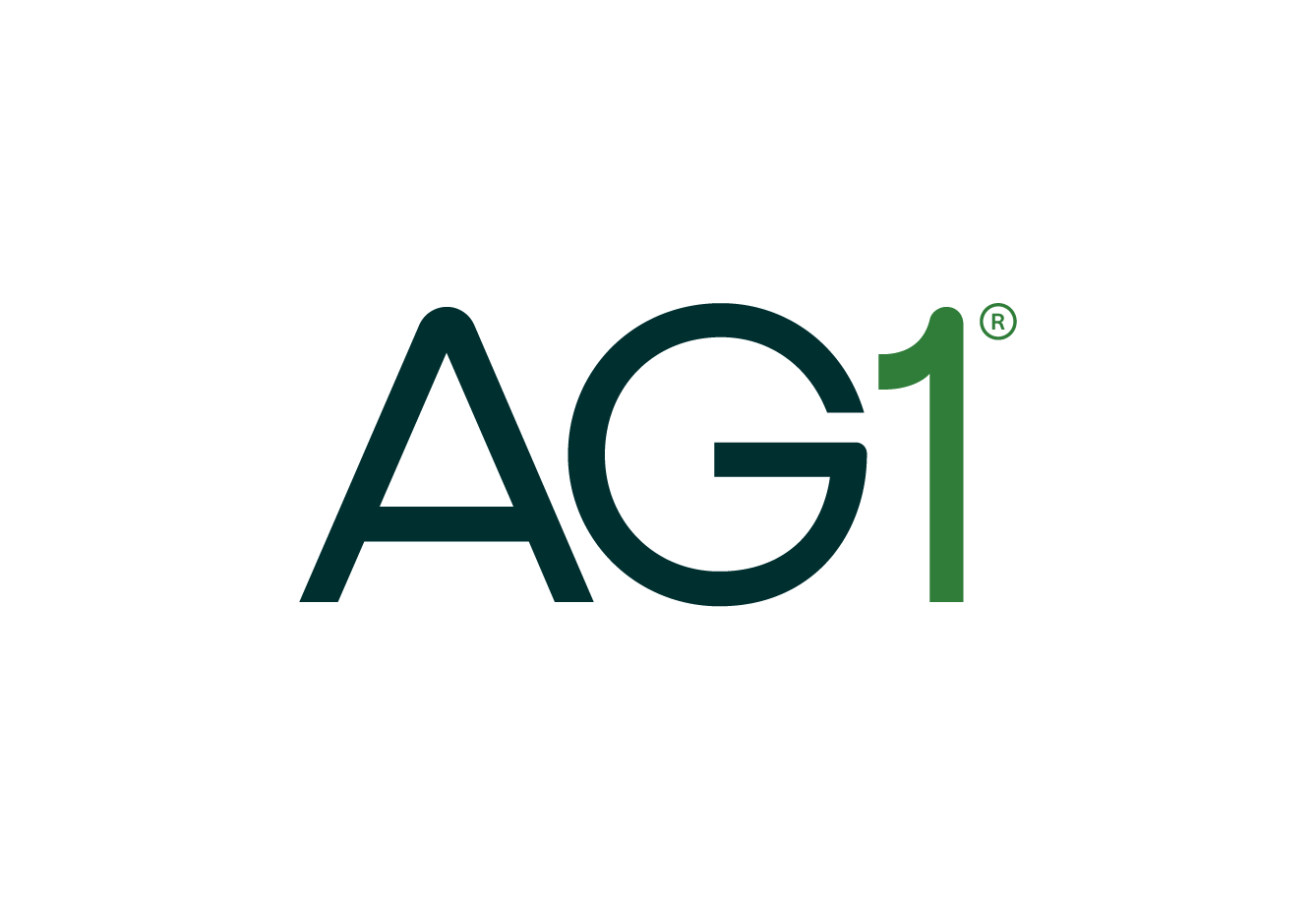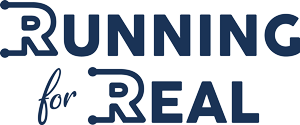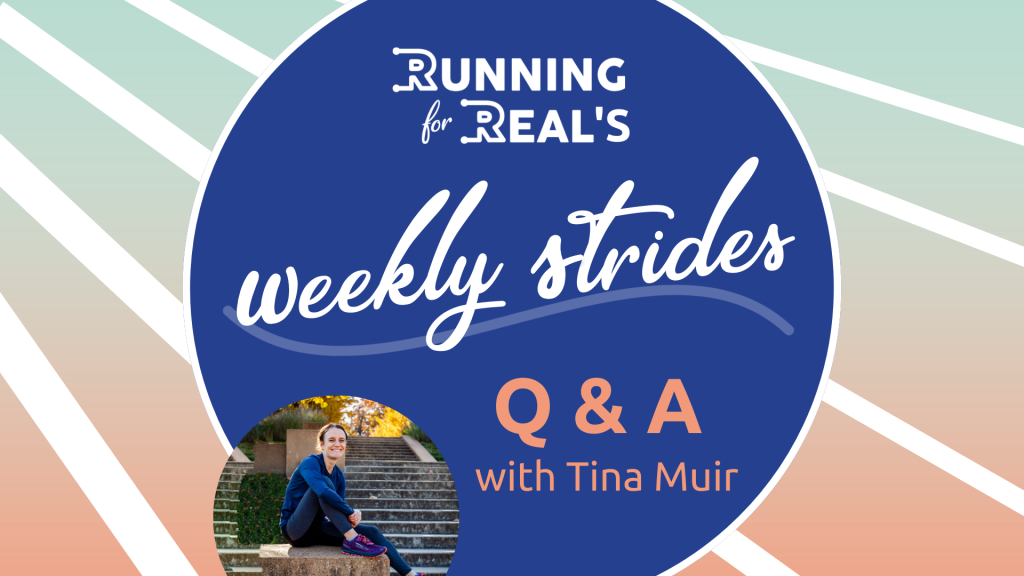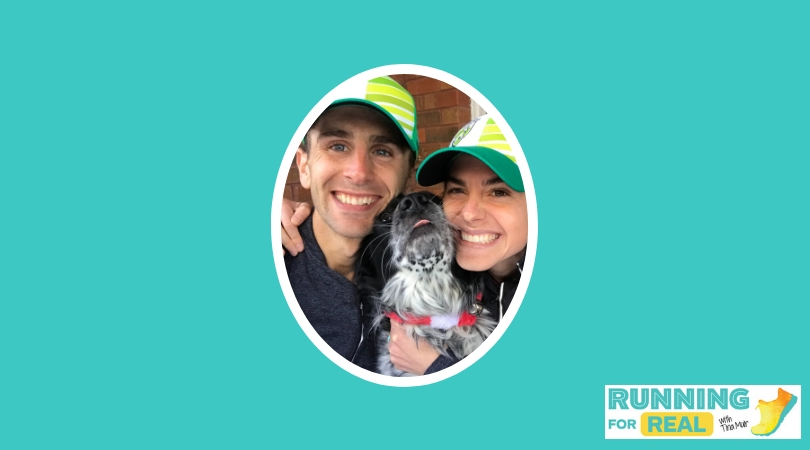Adam Popp’s life changed when he lost his right leg above the knee while working to disarm a roadside bomb in Afghanistan. He also lost his sense of purpose, until he started running. 19 months after taking his first step on a running blade, he became the first above-knee amputee to complete a 100-mile ultramarathon. After that, the records kept falling; he now holds seven Guinness World Records and is aiming to set more next month while running 24 hours on a treadmill.
Listen to the Running for Real podcast here:
Apple (iTunes) Podcast | Sticher | Castbox | Overcast | Spotify | Google Play | iHeartradio |
When Adam joined the Air Force, running was “something that’s forced on you and it’s not necessarily a thing you enjoy. But I wanted to get fit heading into deployment and I ran a half marathon, was miserable, didn’t train for it, so hated running even more.”
Eight months later, he was in Afghanistan, working as an Explosive Ordnance Disposal team leader. “I was working on one of these devices on December 7th [2007] and a secondary device went off, injured me severely. I was basically right on top of it. And in an instant, running was taken away from me. All the things that I thought I was gonna do in the future were taken away from me, at least so I thought in that moment.
“The army medics and my teammate came down and started taking care of me and saving my life, and put me on a helicopter and flew me from the battlefield in Afghanistan to Germany, where I received some care. Woke up in Germany; my leg was amputated, my arm was severely injured and then laying in the hospital bed just thinking like, ‘What’s next? What does my life look like now?” And just a lot of confusion, a lot of you know, not knowing what was next; the unknown was so scary.
“And then four days later, on December 11th, I arrived in Washington, DC at Walter Reed Army Medical Center. And that’s where I started my journey of recovery and laying in that hospital bed and having people come to my aid and rally around me and trying to get me through the most difficult time of my life.”
Adam struggled to rediscover his place in the world. He thought that going back to a similar job would help him put together the pieces of a new community, a new purpose. “I went to a defense contracting company. I was back in Afghanistan a year after I got out of the hospital, working in a combat environment again, trying to find that sense of purpose that I had in the military, trying to find those people around me.I’m trying to find the story of mine. And what I realized was it didn’t work. That was me before it, right? Not me now.
“And then flash forward to 2015, I started to make a conscious effort of trying to find these things. And a lot of things lined up in my life that allowed me to do that. One, starting with a New Year’s resolution of just cutting out drinking, which led to starting back in school, starting volunteering, which led to running in April 2015. And I developed such a strong, positive community through that because a lot of the community I had before was a community, but not necessarily a positive influence, like the running community is.”
One of the nonprofits that Adam worked with put on an annual relay race for combat-wounded military members. In 2015, they were short a member for the running portion of the relay and Adam volunteered. He went to Walter Reed Medical Center and was fitted with a running blade. “I started in the PT area up there on a harness connected to the ceiling, running on like a 200 meter track. And it was difficult, scary, just all the things, but it also gave me a new sense of, ‘Wow, I thought this was taken away from me. And now maybe there’s something here.’ I took the running blade home on that day and started to start very slowly into this learning process of trying to run with a prosthetic blade.”
He practiced in a secluded parking lot, so nobody would see if he fell down. “It felt difficult and amazing. It felt like I gained something that I thought was taken from me for seven and a half years. And then all these thoughts started to come up of like, ‘Where else am I holding myself back?’ or ‘What else that I’ve thought has been taken from me is still there?’ and it just gave me a lot of hope, a lot of curiosity, a lot of, ‘Wow, this is the start of something and it can be the start of so many other things.’”
A month or two later, he decided that he wanted to do a triathlon and he took part in his first one in August. He had done a lot of pool swimming to prepare, but the race was in open water. “I completely freaked out and was having to hang on to the kayak and wrecked my bike the first mile into the bike, but to get to the end of that finish line was like, ‘Wow, another thing that I thought I couldn’t do in a million years’ and was able to achieve that.”
That was the beginning of a dramatic shift in his way of thinking. “Especially early on, a lot of those big challenges seemed very threatening to me, like made me question my abilities. ‘I don’t know if I’ll be able to do this.’ And the more I’ve learned over the years, the more I’ve grown, the more I’ve studied about the topic, I think going into these races, I just see it as a really big challenge that I can either learn and grow from it or be defeated by it. So more recently, how I try to embrace some of these bigger challenges and bigger races is going into this and let’s see what I’m capable of. Let’s see how I can grow through this. Let’s see what I can push my body to do.”
The following year he became the first above-knee amputee to complete a 100 mile ultra marathon within 30 hours a year, and in 2024 he set an amputee record time of 16:13:43 for 100 miles. He was the first amputee to complete the JFK 50-miler, a highly technical course, and went on to complete it another five times. He completed a full Ironman in 11:03:06 and ran a 2:57 marathon on trails. Those are just a few of his accomplishments, in addition to his seven Guinness World Records.
His record-setting streak with Guinness began in 2021, when they began an impairment category initiative to recognize athletes with disabilities. “That’s kind of when it was brought on my radar and I just applied for a few of them that I had already done. And I think once I set that flag kind of in the ground, then it was, ‘Well, I’m like 45 years old now, so maybe I’ll just try to lower them before I get too old and not able to run at the level I’m at now.’ So it has been a little bit of a focus in the past year or so, especially after transitioning from triathlon and trying to find a new big goal of mine.
“I think it’s a good goal to go out and all right, this is kind of who I was at 44 or 43. Can my 45- year-old self maybe compete with my younger self and see where I am mentally, physically. And it’s not always necessarily the outcome goal. Cause that seems like kind of where the question stems from is the outcome, right? But to me, it’s more about if I’m able to work through things mentally or even physically and have different intermediary goals along the way, instead of, ‘Okay, you hit this time or distance.’ Am I happy or sad now? I can be happy without necessarily hitting a specific time or distance.”
Adam’s next event is a 24-hour treadmill run at Hoka’s flagship store in New York City, where he’ll attempt to set world records for the treadmill, as he’s done on the trails and roads. He’s being supported by, among others, Achilles International. “It’s going to be a closed event on October 15th, starting at 9 a.m., but if people want to come run with me, there’s going to be a treadmill set up next to me where they can run next to me and be like a guide runner, if you will. If you’re a nonambulatory runner, feel free to walk. And Achilles is going to have some hand cycles set up where people can hand cycle if they can’t run or push rim, for wheelchair users. It’s this idea of the organizations who have really helped me grow to get to this point, supporting me in this journey, supporting other runners like me in this journey, to be able to really pursue big dreams, big goals, and do big things.”
Resources:
Thank you to Runna, AG1, and LEVER for sponsoring this episode.

Runna is on a mission to make running as easy, effective and enjoyable as possible by providing personalized running plans built by Olympic athletes and expert coaches. They have plans for runners of all abilities, from Couch to 5K to elite level, and offer strength, mobility, and Pilates plans to integrate with your running. They even have a community section on the app, where you can connect with like-minded runners.
There’s a reason why they’re the #1 rated running app in the world – go here and use code RUNNINGFORREAL to get two weeks free!

AG1 is a foundational nutrition supplement that delivers daily nutrients and gut health support. Unlike so many products, the entire formula is backed by research studies, not just the ingredients. AG1 is packed with a variety of nutrient-dense ingredients and is the perfect complement to a healthy diet.
It’s easy and satisfying to start your journey with AG1. Try AG1 and get a FREE 1-year supply of Vitamin D3K2 AND 5 free AG1 Travel Packs with your first purchase here.

The LEVER system is an innovative way to reduce your body weight while exercising on a treadmill, which means less impact on your joints. It sets up on your home treadmill or at your local gym in under two minutes! Whether you’re coming back from an injury, looking to increase your running volume, or wanting to add some serious speed work to your routine, LEVER has got you covered.
Check it out here and use code TINA to get 20% off!
Thanks for listening!
If you haven’t already, be sure to subscribe on Apple, Spotify, iHeart, YouTube, or wherever you get your podcasts. And if you enjoy Running for Real, please leave us a review!
Keep up with what’s going on at Running for Real by signing up for our weekly newsletter.
Join the newsletter
This is not your usual email newsletter. With Tina’s personal reflections and recommendations, suggestions of things to do, thoughts to contemplate, and some updates, this newsletter is one that you’ll WANT to read, not hit “delete” as soon as you see it.
Follow Tina on Instagram, Facebook, and X. You’ll find Running for Real on Instagram too!
Want to be a member of the Running for Real community? Join #Running4Real Superstars on Facebook!
Subscribe to our YouTube channel for additional content, including our RED-S: Realize. Reflect. Recover series of 50+ videos.
Thank you for your support – we appreciate each and every one of you!



